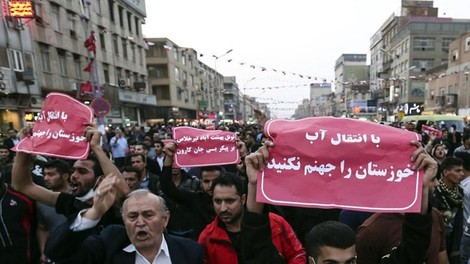Your podcast discovery platform
Curious minds select the most fascinating podcasts from around the world. Discover hand-piqd audio recommendations on your favorite topics.

piqer for: Climate and Environment Globalization and politics Health and Sanity
Mona Silavi is a human and women’s rights activist from the Ahwaz region in Iran. She obtained her bachelor in psychology and specialized in children and adolescence psychology at Damascus University, faculty of psychology and education. She holds a master degree in good governance and human rights in MENA region from Ca’ Foscari University in Venice. She started her activism in Damascus as member of Ahwazi Arab student association. Mona Silavi is a Project Officer at the Unrepresented Nations and Peoples Organization (UNPO) and is the coordinator for topics concerning freedom of religion and belief. She is also a spokesperson of the Al-Ahwaz Democratic Solidarity Party (DSPA). Since 2014 Ms Silavi lives in Belgium as a political refugee
Water Mismanagement: How Far Is Iran From An Environmental Crisis?
Iran’s news is constantly on the global mainstream media, and the main topics are Iran’s nuclear deal and human rights violations. What is often absent is reporting about the country's environmental crisis. Currently, people in the streets of Tehran are protesting due to economic instability, meanwhile the southern part of the country is witnessing demonstrations over environmental problems.
Iranian government and experts funded by Tehran blame the issue of water shortage on drought and climate change. Although climate change is unquestionably a reality, Iran’s water crisis is manmade and the result of water mismanagement for the past four decades.
The evidence, however, shows that the reason behind the environmental crisis is largely the outcome of government development projects. These projects are implemented despite the objections from environmental scientists and almost in all cases in contradiction with environmental standards.
The Islamic Republic of Iran has been transferring water from the south-western region to the central plateau of Iran for years. The impetus for the transfer scheme is most notably for the development of a single city: Isfahan.So far, 90 dams and several tunnels have been built by the Islamic Revolutionary Guard Corps (IRGC) on Karun to provide water for agriculture and steel industry in Isfahan.
The Iranian government tries to convince the international community that the country is stable and ready to attract European tourists:
What tourists do not know, however, is how many indigenous farmers, fishermen and villagers have become homeless and jobless for Isfahan to be that green and beautiful. It doesn’t come as a surprise that European Union officials are not authorized to visit any other part of Iran. If the Iranian government and international community continue to ignore the daily pleas and protests of locals farmers, the world will witness a new wave of refugees from Iran: the climate refugees.
Stay up to date – with a newsletter from your channel on Climate and Environment.
